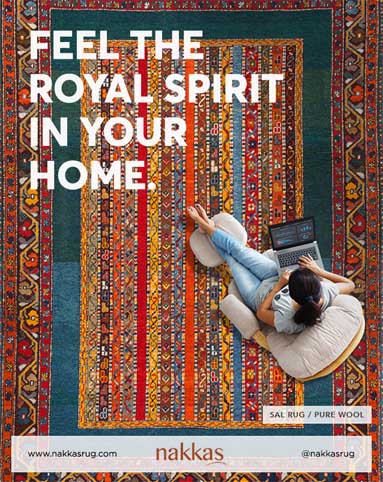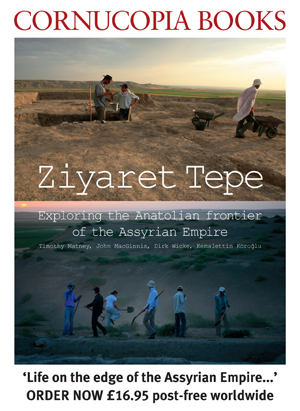Opening night. The triptych in the background is titled Repair/Lapis Lazuli by Ahmet Doğu İpek.
Galerist kicked off the 2024-2025 art season with the exhibition Distilled From Scattered Blue, curated by Károly Aliotti, who brings a wealth of experience from his roles at Meşher and Arkas. The show features the diverse work of 36 talented artists spanning over a century, from Gustav Klimt to the up-and-coming Ankara-based artist Anıl Saldıran. Rather than providing an academic reading of the origins and history of the color blue, the exhibition identifies the shared emotional resonance blue evokes.
While the first exhibition Aliotti curated seven years ago explored the fertile creativity of black, his recent curation is an invitation to unpack ‘this heavy, greasy ink-like, moist blanket of blue squeezed in one’s spleen’. In each meticulously curated room, artworks are placed enhance this preconceived notion that the colour blue speaks of ‘wounds, memory, longing, loneliness, and distance’.

Equilibrium 58 by Erman Özbaşaran
The show opens with a painting that is distinctly un-blue, accompanied by a stanza from Lavinia Greenlaw’s poem From Scattered Blue, which serves as the title: Equilibrium by Erman Özbaşaran is composed of a reddish-orange upper body that gives the impression that it is being pushed outward by the black lower half. A landscape of a sunset gradually yielding to darkness reminding that other than the fleeting sky blue, blue has never been the colour of happiness; instead it represents something denser and heavier.
_.jpeg)
As a means to prove this, at the end of the dimly lit corridor is an isolated Joan Miró statue, Person in the Night.
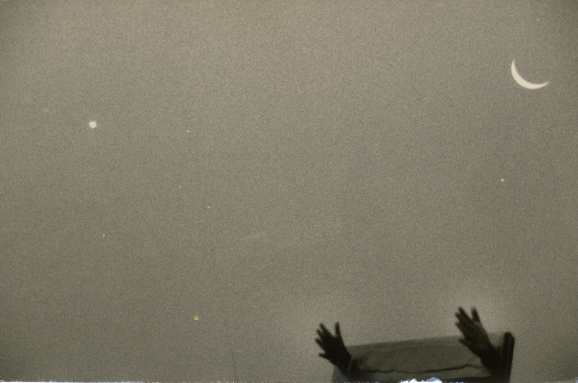
Alongside Miró's embodiment of loneliness is a whimsical picture by Masao Yamamoto, #0832, of a darkened night with arms reaching towards the midnight trying to grasp the moon.
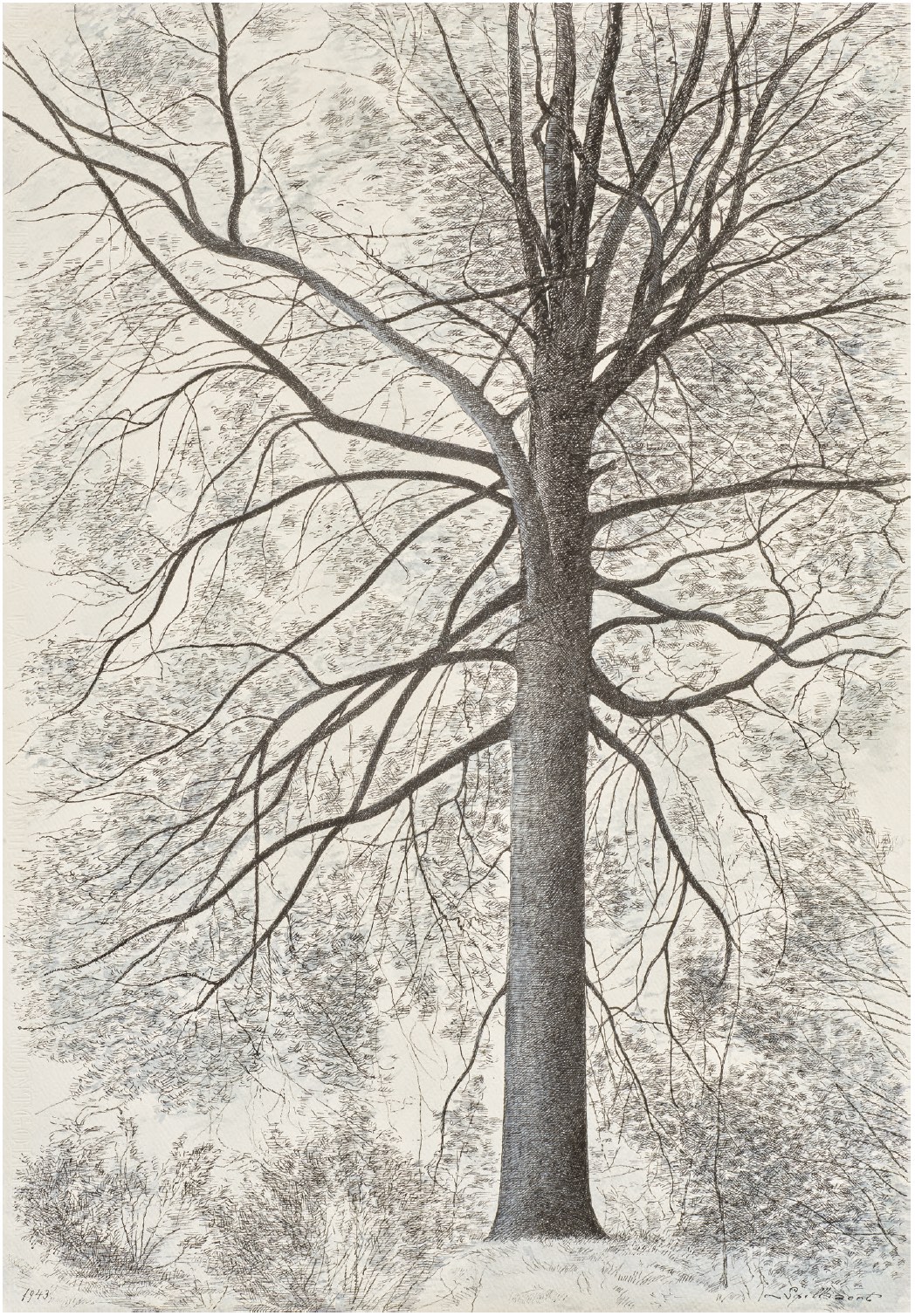
The exhibition’s first section is devoted to a contemplation on the essence of the colour blue. Léon Spilliaert’s watercolour from 1943, The Lone Tree, of a tree branching out from the paper poses the question: “Does blue spread like a tree?”
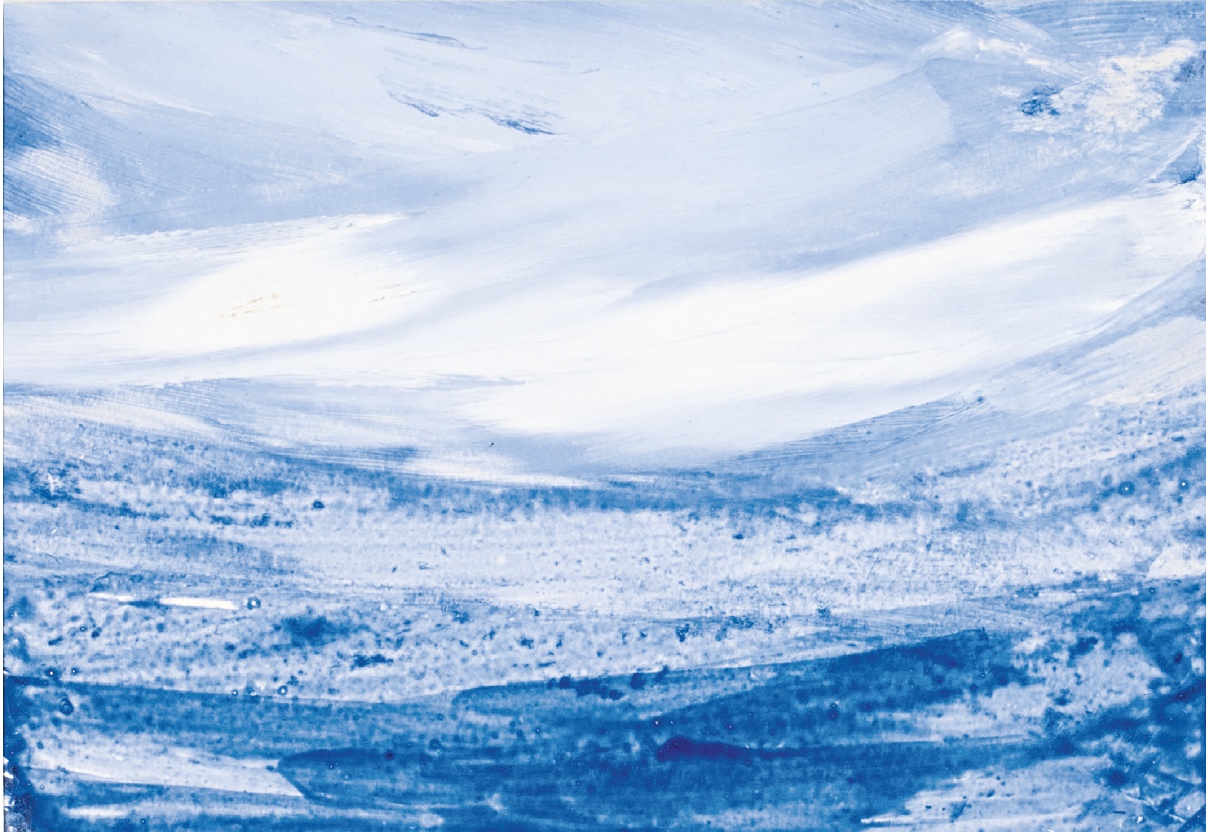
In Untitled No.89, Dora Maar inquires whether blue arrives in waves.
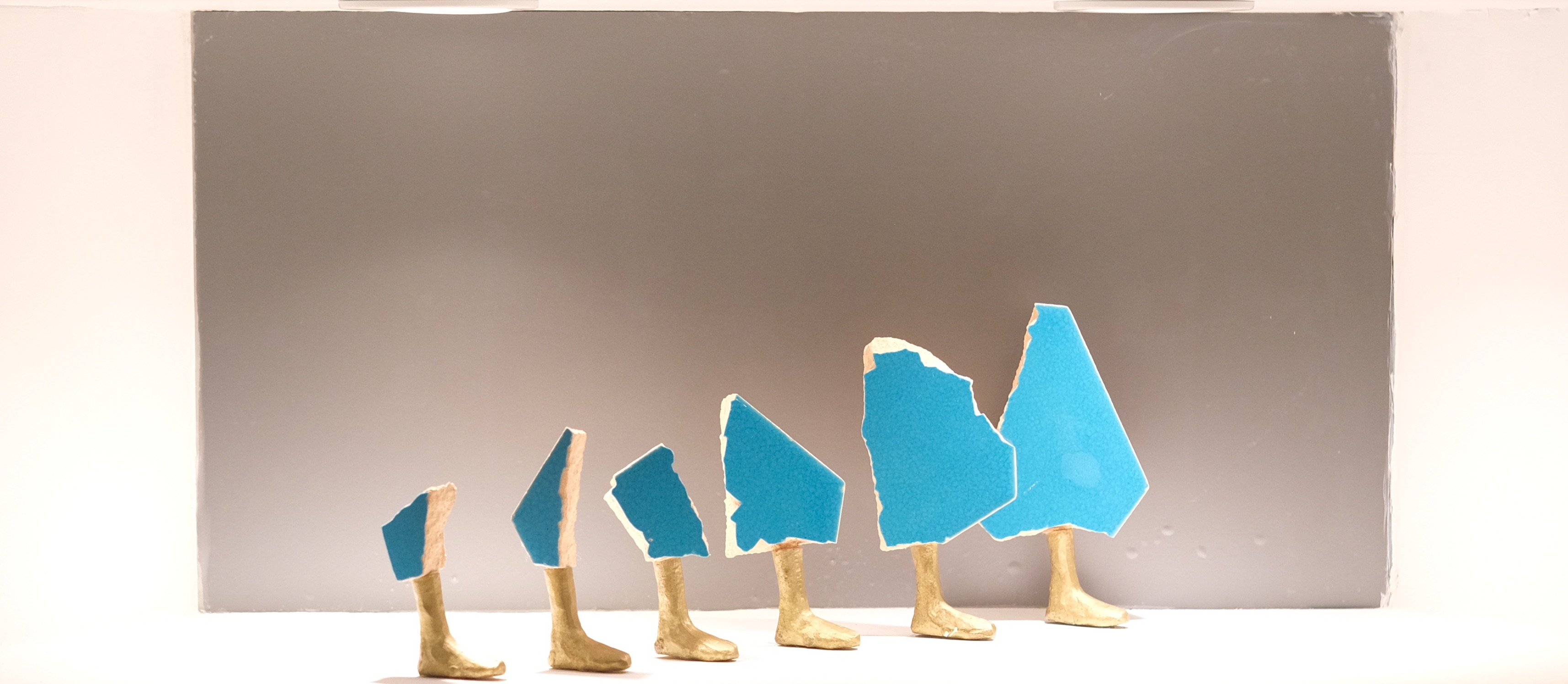
Hera Büyüktaşcıyan's piece, Archipelago Fugue, a series of various seized blue ceramic statues standing on bronze boots, suggests that blue comes in fragments. All setting the tone for the somatic expression of blue to be viewed next.
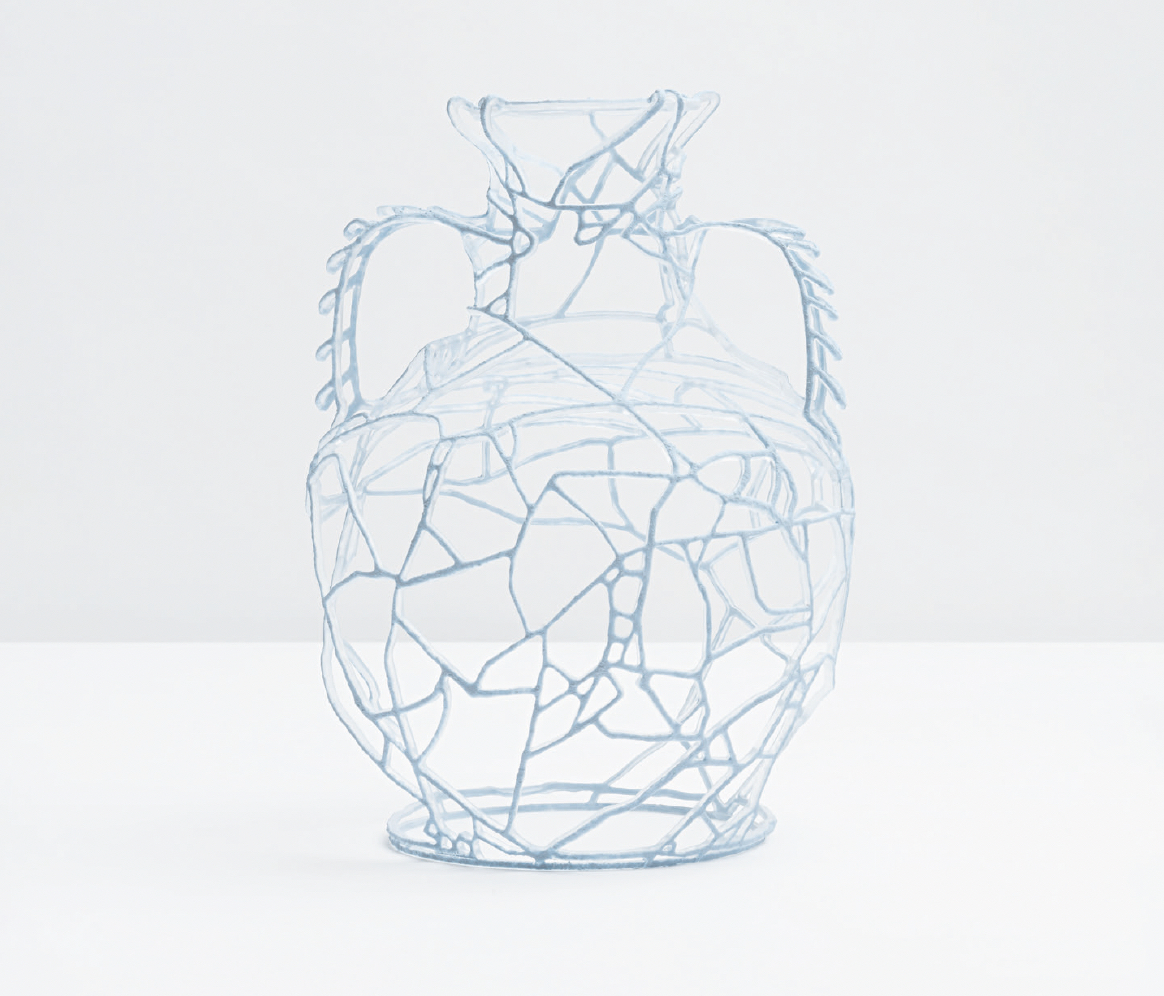
The small nook to the left of the first room showcases pieces that serve as a poignant reminder that inevitably the past leaves marks, holes, stitches, wounds behind. Regardless of whether one acknowledges it or not, one is never the same again. Clare Twomey’s The Invisible Vase is a hollowed out ceramic vase in a light, almost white-ish blue hue characterized by its holes. Fatoş İrwen’s Howl-1 sees artist and activist, who was incarcerated between 2017 and 2020 for political reasons, stitch her own strands of hair onto paper, complemented with tea and toothpaste.

The naked clay rectangle, cracked from the middle of Lara Ögel’s Wound, mimics that of a scraped body part. All examples of bodies holding memory.
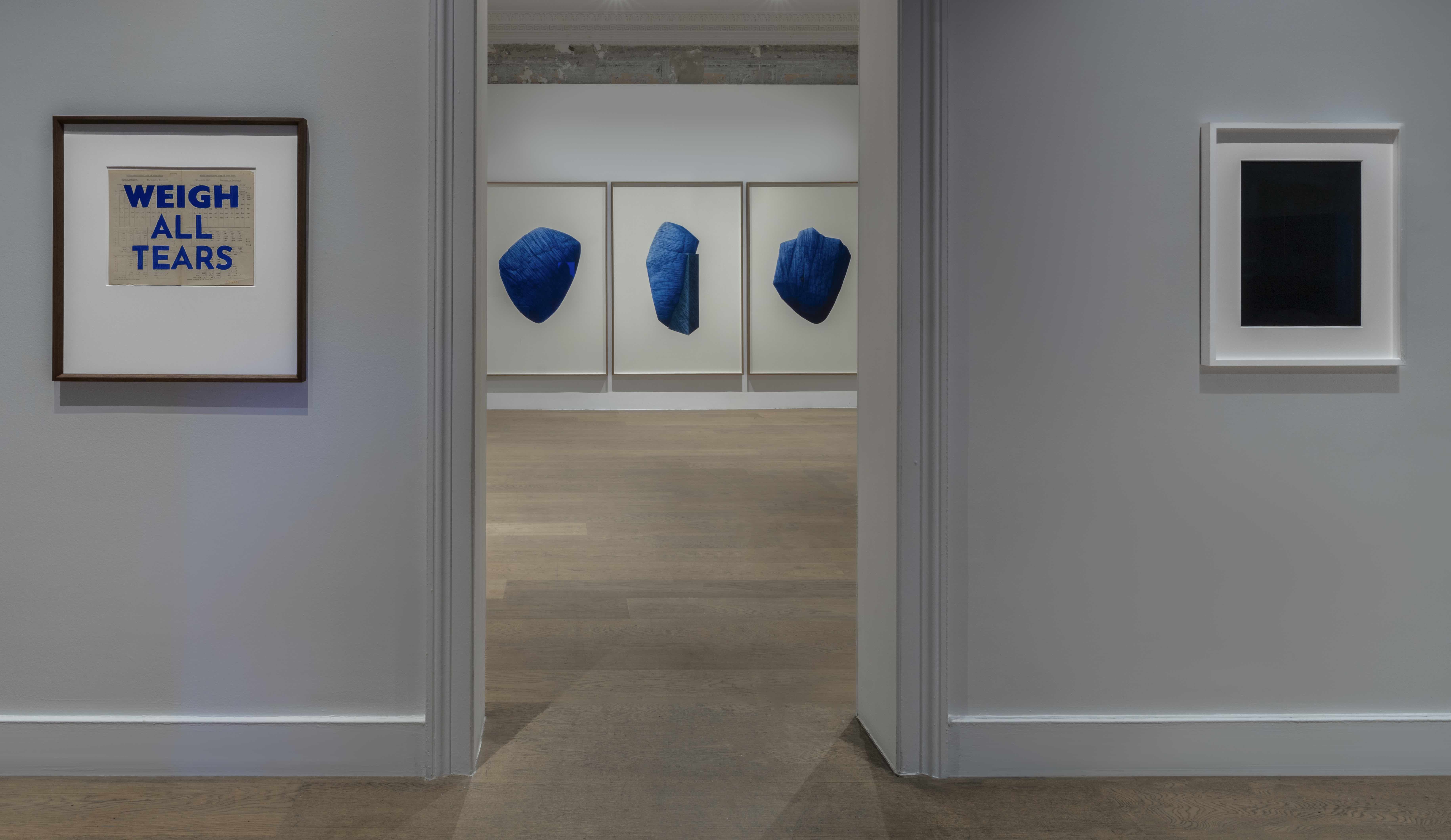
The second room is a testament to what follows, as referenced in the exhibition catalogue from Rebecca Solnit’s book A Field Guide to Getting Lost: “Nobody gets over anything; time doesn’t heal any wounds.” The works chosen for this space speak of the toll this takes on one’s body, soul, and mind. In Ahmet Doğu İpek’s triptych Repair/Lapis Lazuli, the artist has managed to solidify the ephemeralness of watercolors. The texture of the lapis lazuli blue brushstrokes entrapped in heart-shaped stones.
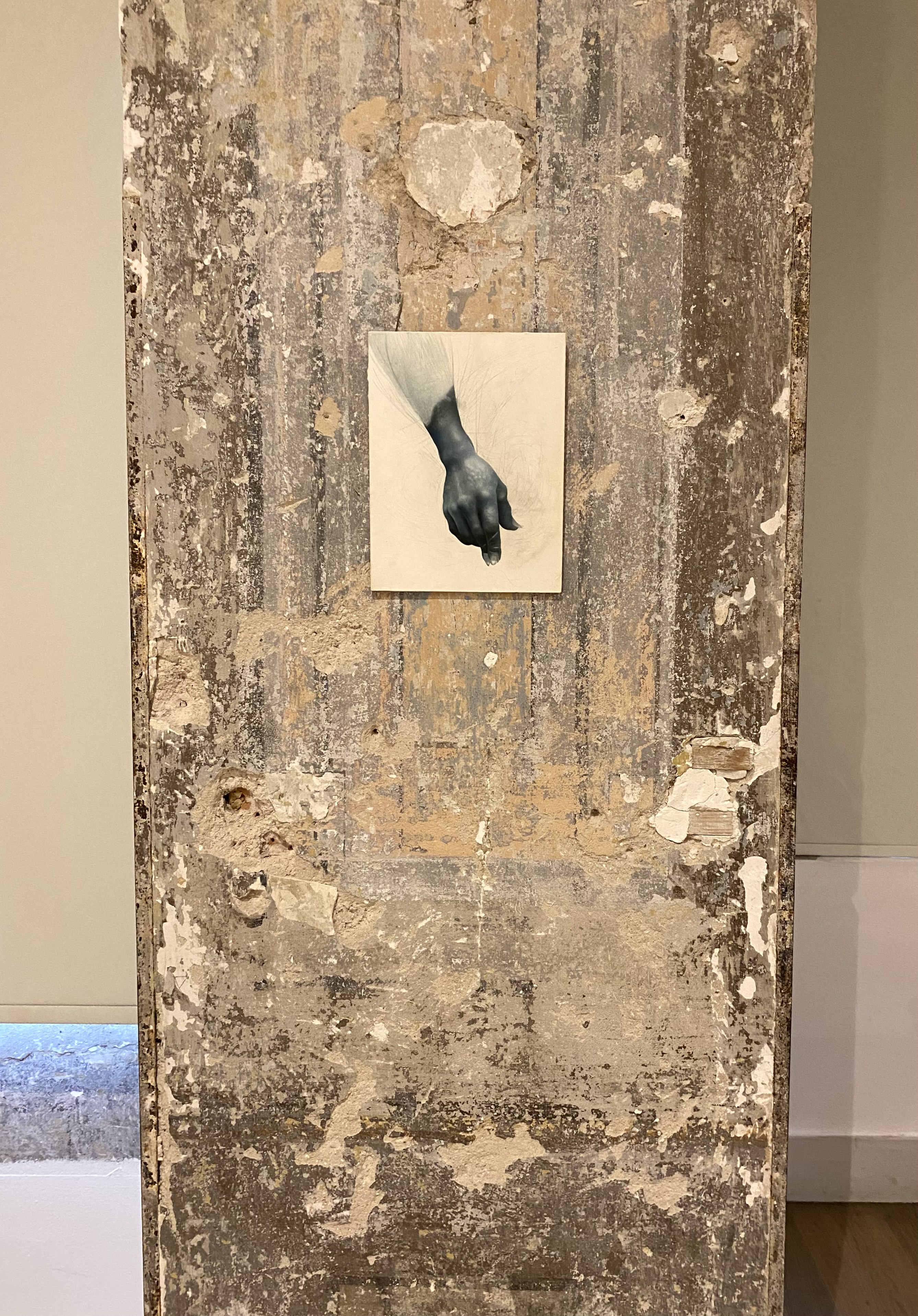
Anıl Saldıran’s Hand depicts a disproportionate and unfinished hand, as if it is a cold and distant memory.
In Untitled (Blue Landscape) Yaşam Şaşmazer’s sculpture of an upper body with mushrooms growing out of it, emerging from a white cast with an inner blue lining.
The beauty of exhibitions lies in the unexpected connections that emerge when artworks come together, transcending even the most careful planning. This is evident in the third room as it opens into the second, where an unanticipated dialogue unfolds between Ahmet Doğu İpek’s paintings and William Kentridge’s Weigh All Tears, inscribed in lapis lazuli blue on a background of measurement scripture. This interaction transforms Doğu İpek’s blue hearts—symbols of unprocessed trauma and unacknowledged grief—into a torrent of tears, beautifully complemented by Elif Uras’ Swan’s Tears. Uras’ sculpture is a modern interpretation of an ancient teardrop canister, evoking the delicate form of a flower reaching for the sun.
In the fourth and last space, the show ends as it began—with a subtle landscape painting of mountains in off-white blue captured in a triptych Kaf Series by Murat Akagündüz. Suspended above the triptych and filling the room is a cage of neon blue—Sarkis’ powerful Blue Heart—casting the space into a celestial performance. Together, they create an illuminated version of blue—one that has been processed, acknowledged, and transformed. It is not forgotten. The forever mark, the wound as a capsule of one’s experience, remains. It is no longer confined in a cage; rather, the former cage is reimagined into something beautiful.
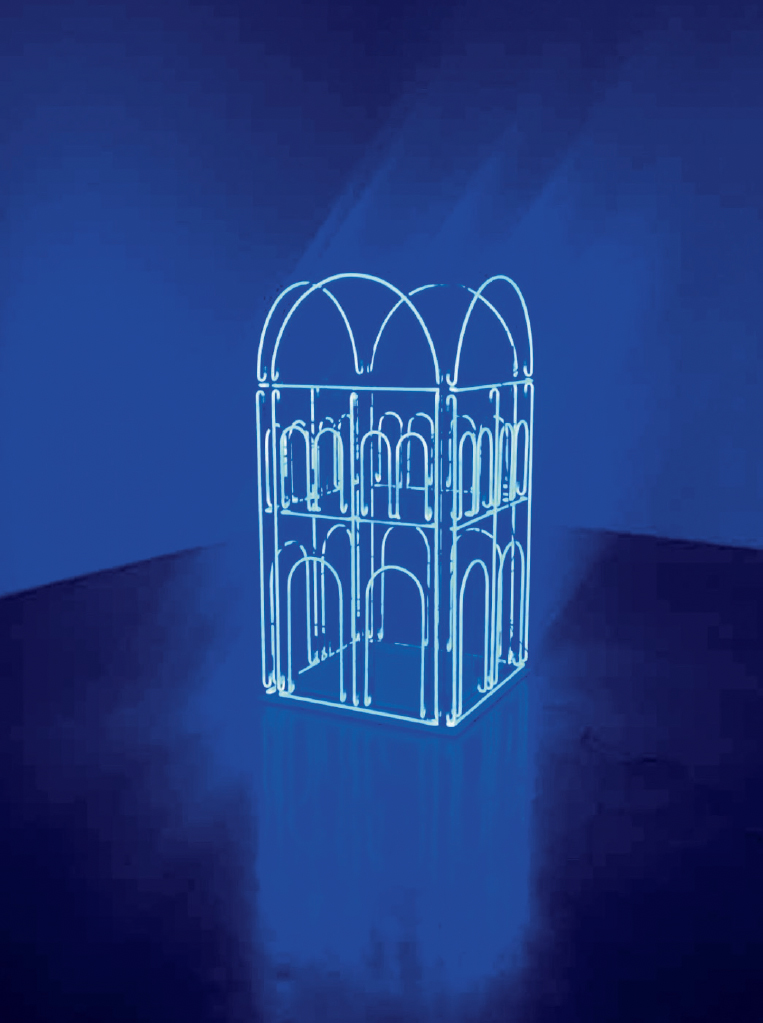
Blue Heart by Sarkis
In the fourth and last space, the show ends as it began—with a subtle landscape painting of mountains in off-white blue captured in a triptych Kaf Series by Murat Akagündüz. Suspended above the triptych and filling the room is a cage of neon blue—Sarkis’ powerful Blue Heart – casting the space into a celestial performance. Together, they create an illuminated version of blue – one that has been processed, acknowledged, and transformed. It is not forgotten. The forever mark, the wound as a capsule of one’s experience, remains. It is no longer confined in a cage; rather, the former cage is reimagined into something beautiful.

The final stroke of the exhibition is subtle. Tucked away in the right corner of this room is a dark box where Sky and Earth and Ten Thousand Things by Çağla Köseoğulları resides. A distinct line of white-blue slices through deep shades of blue. Hidden for the curious to discover, for those who want to push through the heaven-like space created by Sarkis and Akagündüz. This standalone painting evokes a barline in a musical composition – marking the closure of a chapter, yet not the end.
Because blue never dies, it only changes shape.
On till 2 November at Galerist, Meşrutiyet Cad. 67/1 Tepebaşı, Beyoğlu https://www.galerist.com.tr Monday to Saturday 11:00 - 19:00.






